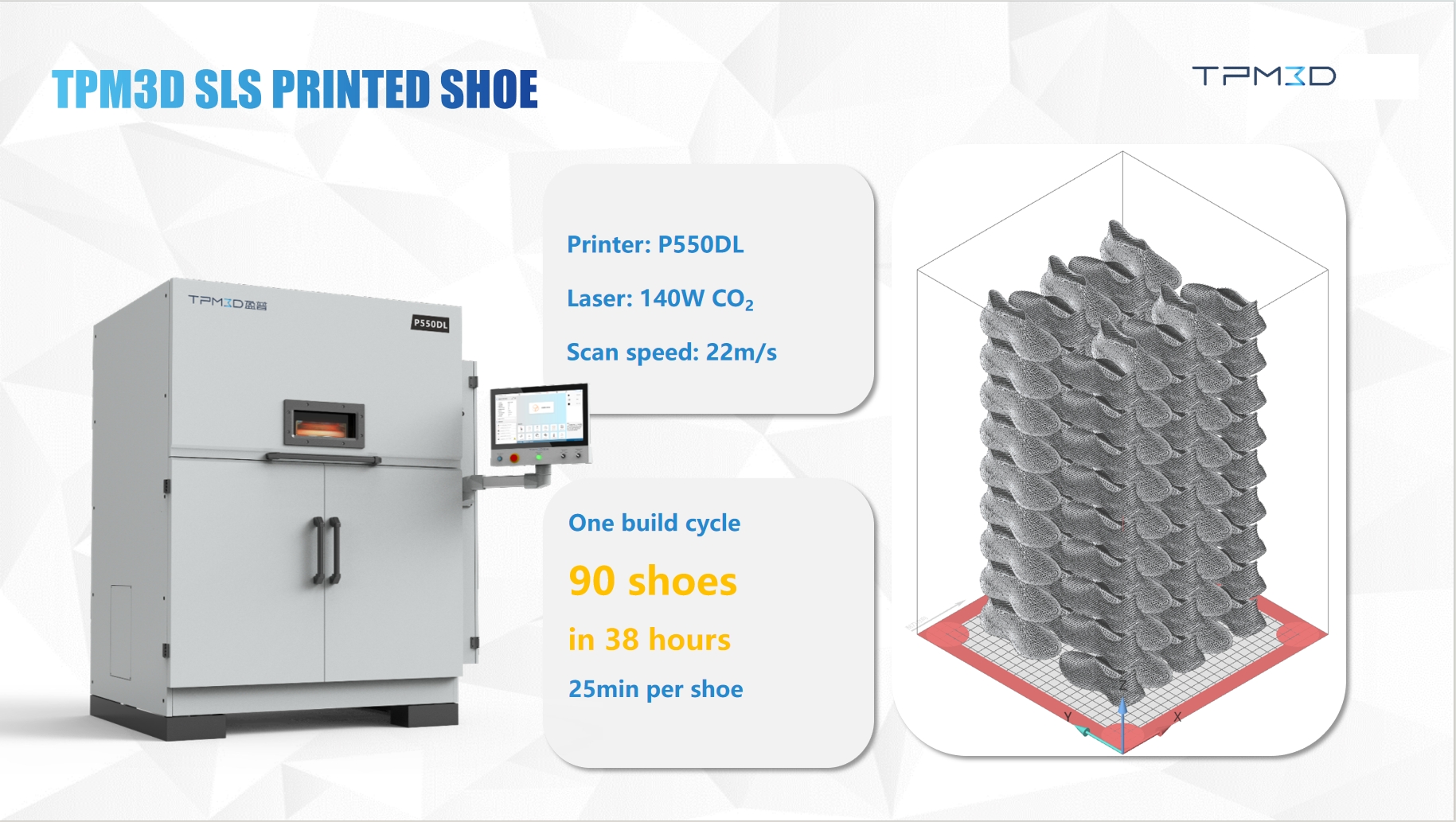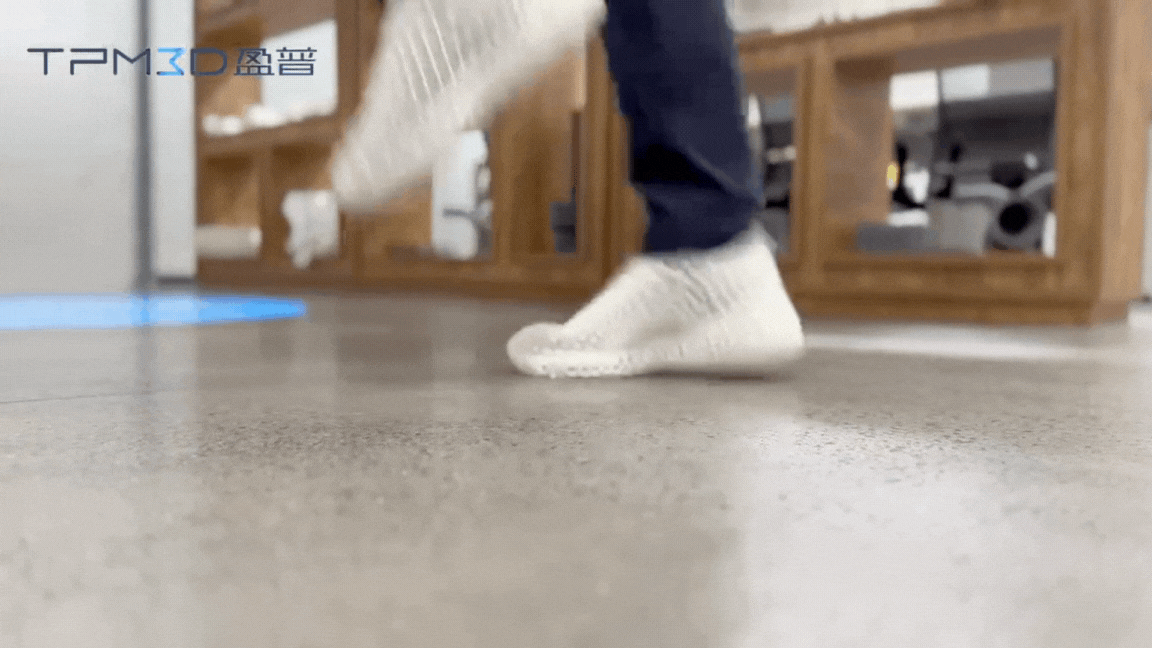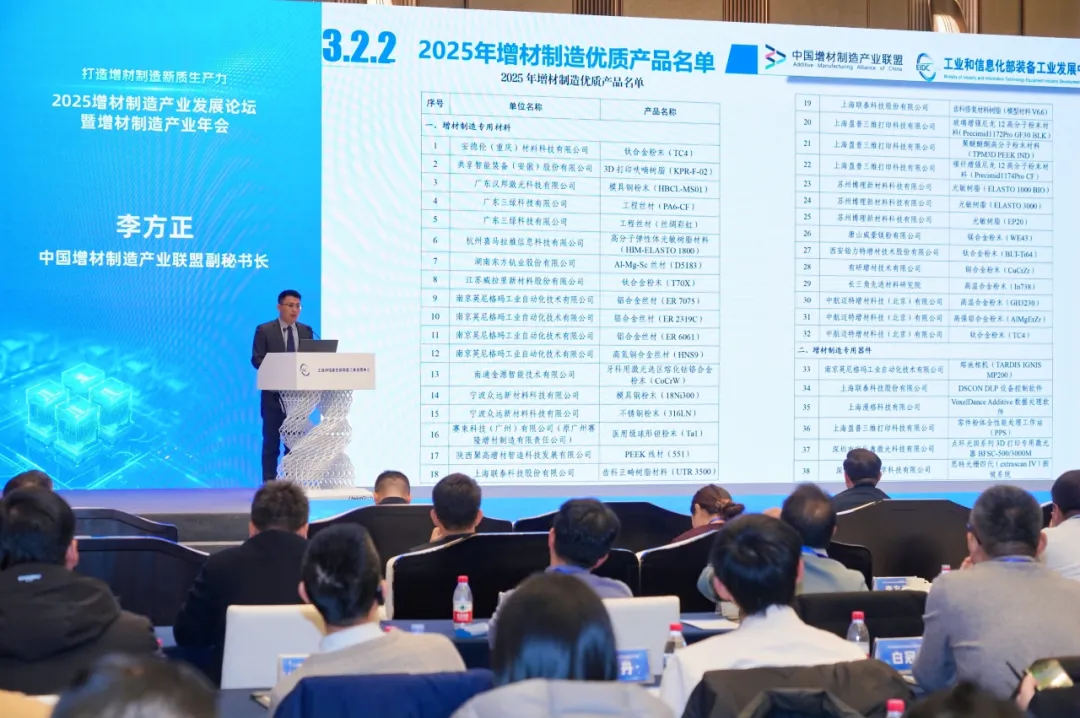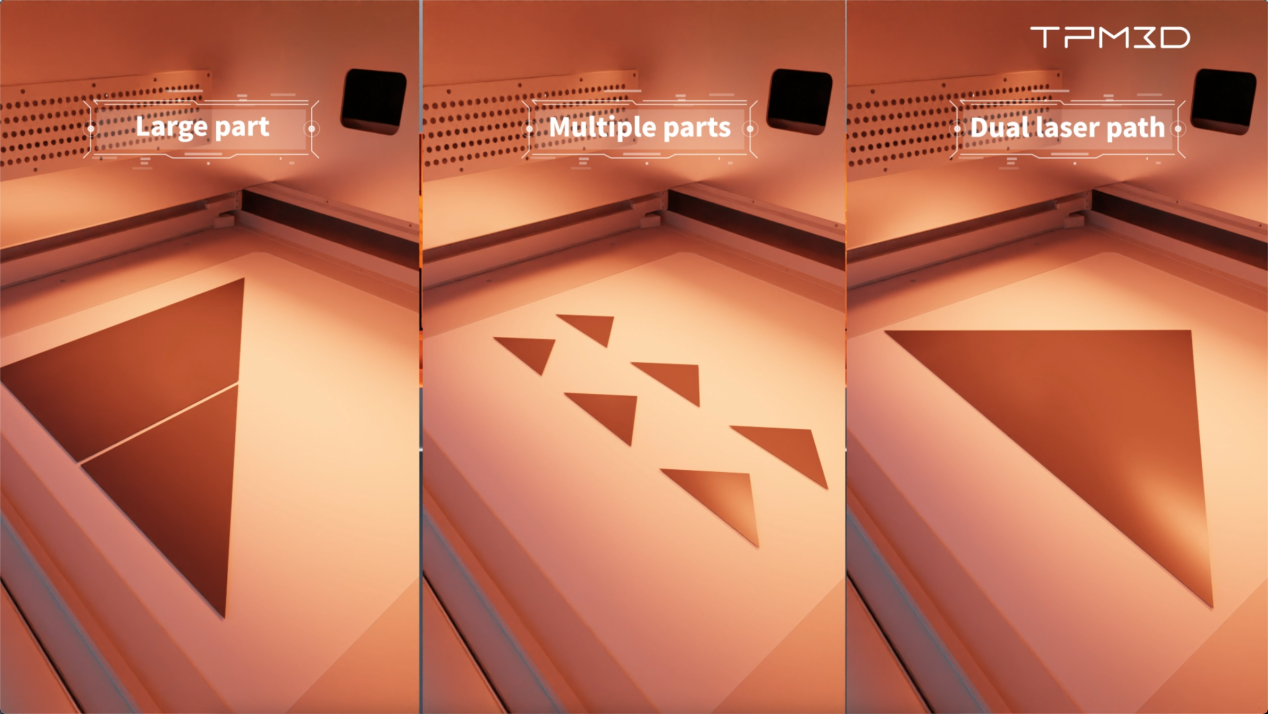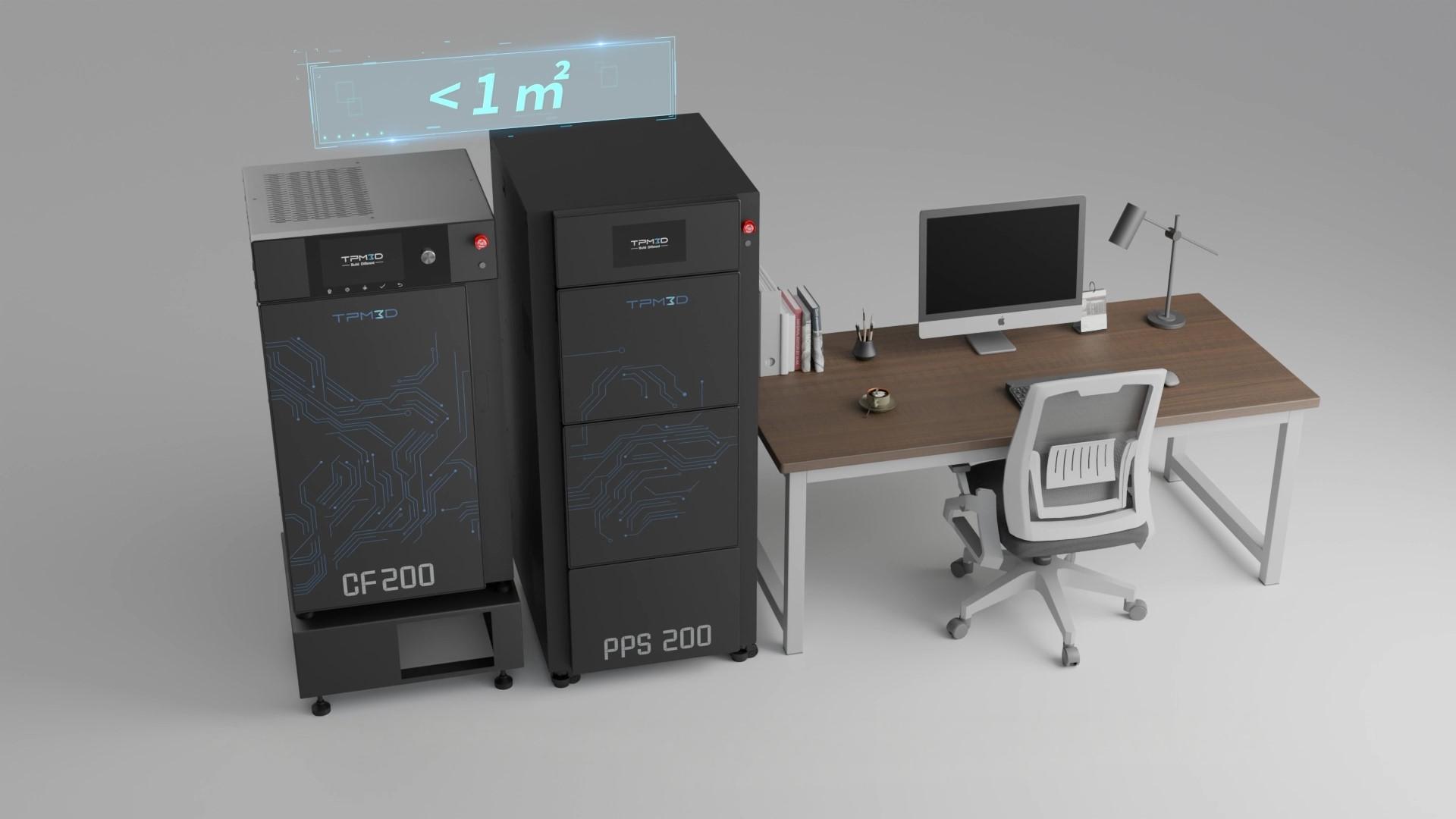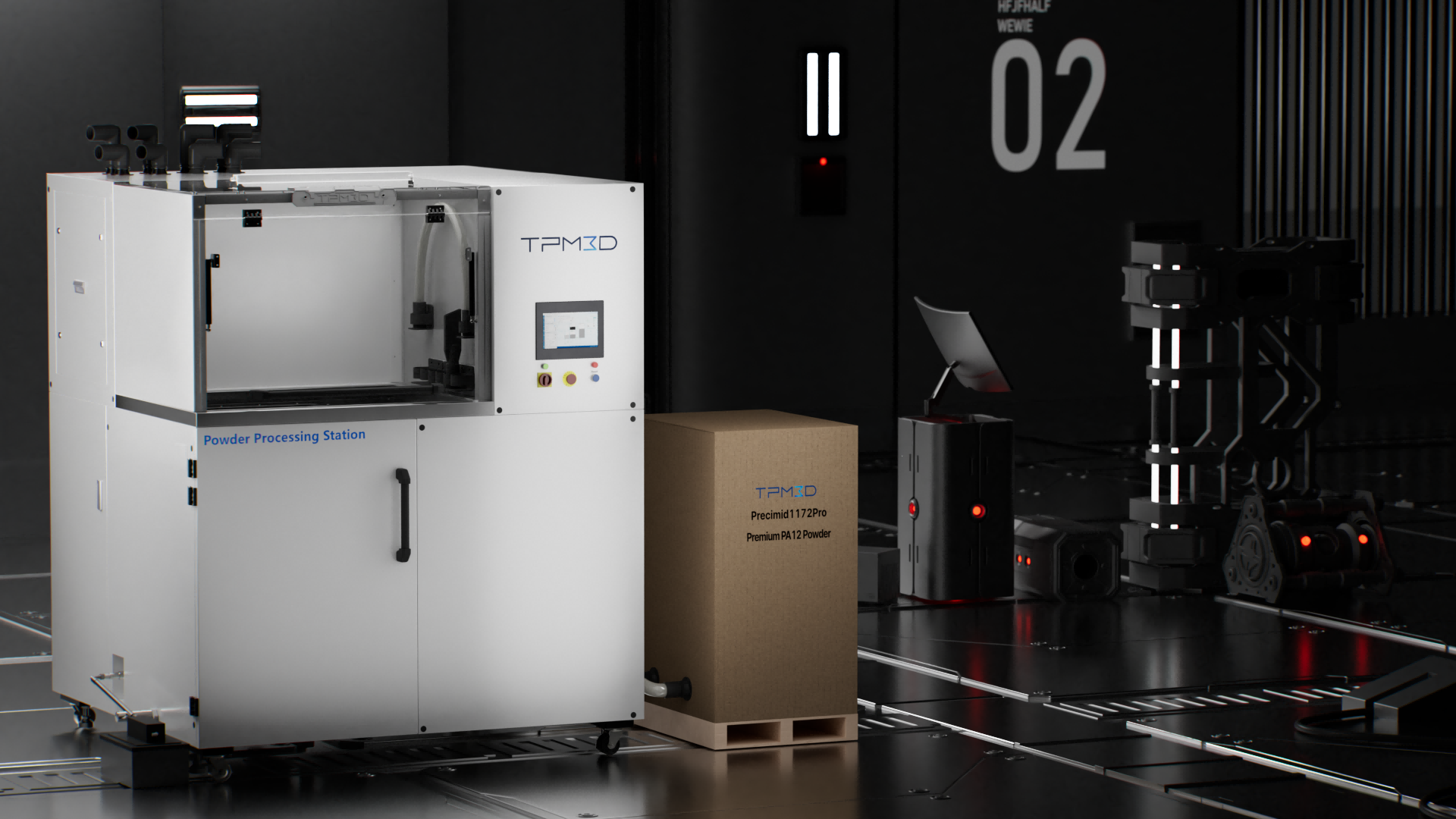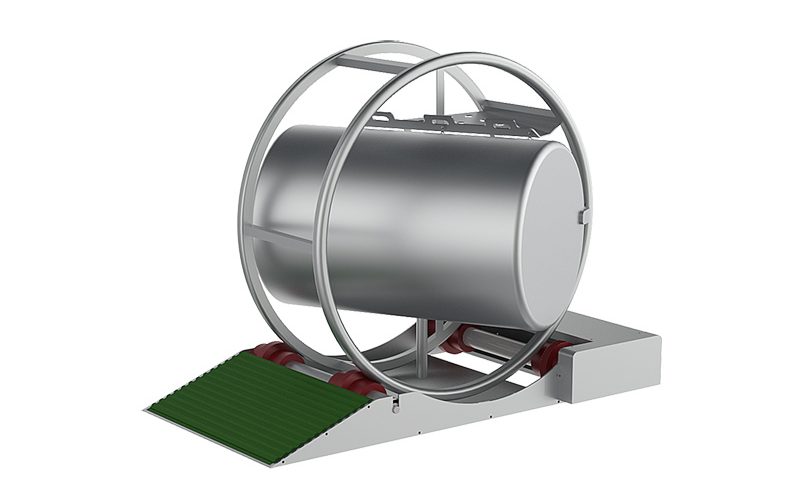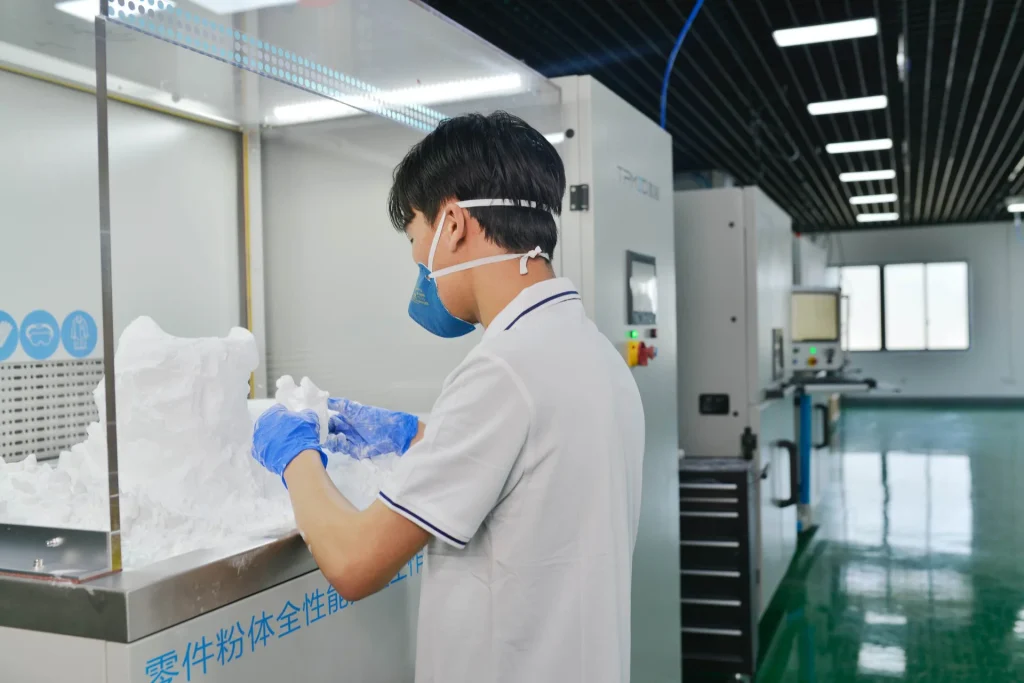At the China International Supply Chain Expo (CISCE), TPM3D officially launched its end-to-end selective laser sintering (SLS) 3D printing solution for the footwear industry. The new digital workflow compresses the traditional multi-step manufacturing process into just three steps—scanning, design, and printing—reducing production time for a single shoe to as little as 25 minutes.

From Complexity to Simplicity: Digitizing the Shoe Manufacturing Process
In conventional footwear production, a pair of sports shoes typically requires over 20 steps, including component assembly (uppers, insoles, outsoles), adhesive application, drying, shaping, and final finishing. This often results in high equipment costs and production cycles lasting several weeks.
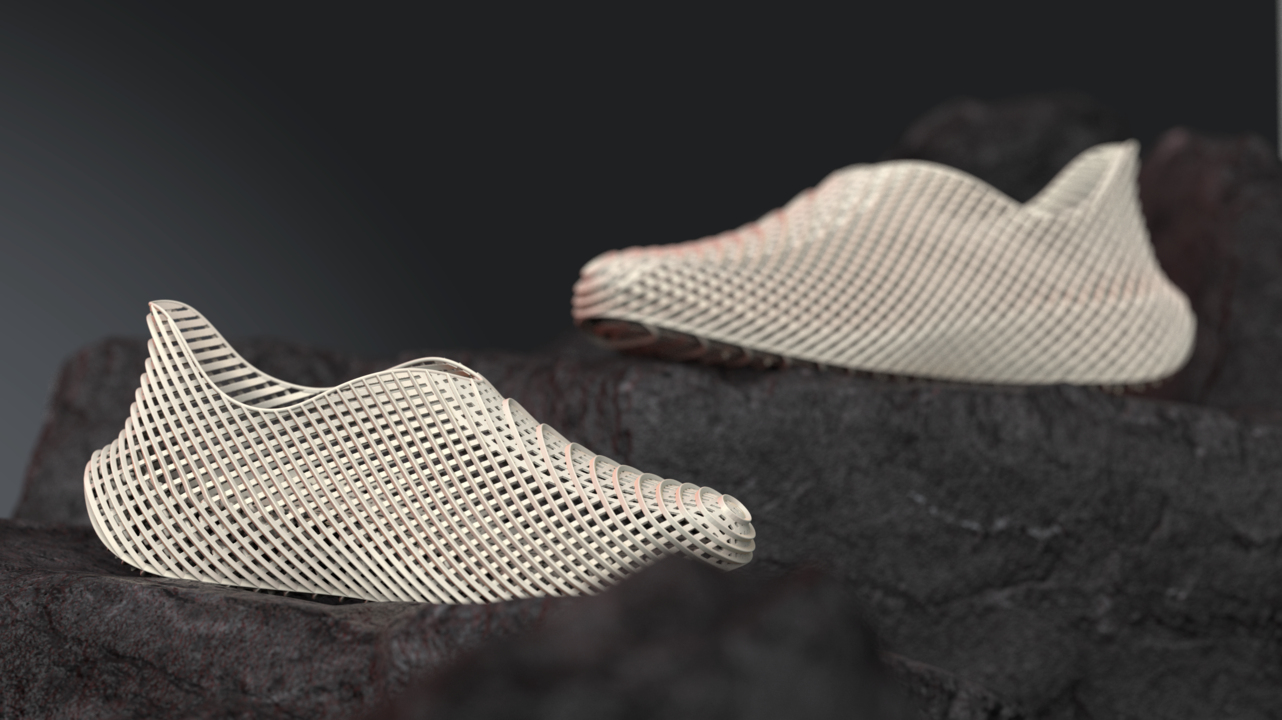
TPM3D’s digital footwear solution aims to simplify and accelerate this process. Built on in-house developed SLS technology, the solution includes proprietary software, polymer materials, industrial-grade printers, and post-processing systems—offering a complete, vertically integrated system.
Using the Precimid series of high-performance polymer powders such as TPU, the solution delivers shoes with excellent rebound and durability. TPM3D’s P-Series and S-Series printers meet international safety standards and are designed for consistent, efficient production. Together with TPM3D’s post-processing equipment, the solution supports consumer-ready product finishes.
Key features include:
- Digital Design Tools: The software enables lattice structure designs that balance breathability, weight, and mechanical performance—without the need for support structures used in other 3D printing methods like FDM or SLA.
- Efficient Printing: The P550DL dual-laser SLS printer operates at up to 22 m/s scan speed and 0.15 mm layer thickness. One build cycle (38 hours) can produce up to 90 finished shoes, enabling small-batch and on-demand production.
- Material Performance: Compared with resin-based prints, TPM3D’s SLS-printed shoes are lighter and more flexible. They also show improved strength and durability compared with FDM-printed footwear. The materials offer a balance of structure and comfort.
- Sustainability: The thermoplastic powders used are recyclable and meet the environmental requirements outlined in China’s GB/T 30102-2024 guidelines for plastic waste reuse. The process is low-waste and non-toxic.
A sample shoe displayed at the event demonstrated a breathable, lightweight design that combines elements of both sandals and sneakers—offering a glimpse into practical applications of the technology.
A Vision for the Future: Smarter, Greener, More Personalized Manufacturing
TPM3D believes true innovation comes from collaboration. Looking ahead, the company aims to partner with global footwear brands, healthcare providers, and research institutions to unlock the full potential of SLS 3D printing. Together, TPM3D hopes to drive the transformation of manufacturing toward smarter, greener, and more personalized solutions, bringing its vision of “Technology Empowering a Better Life” to life.

